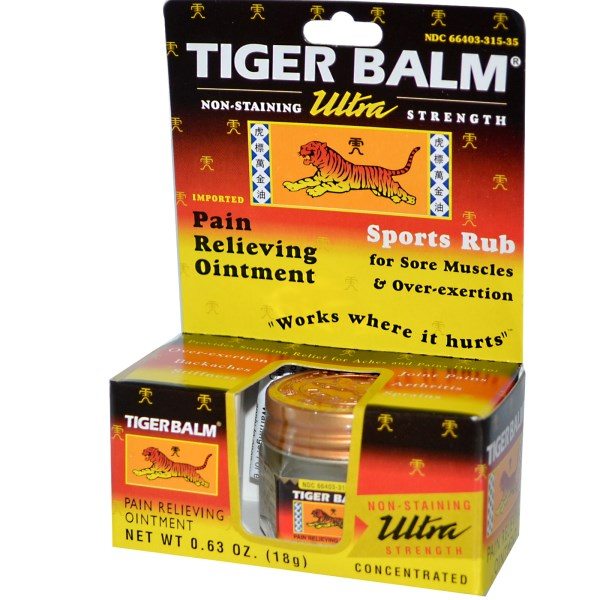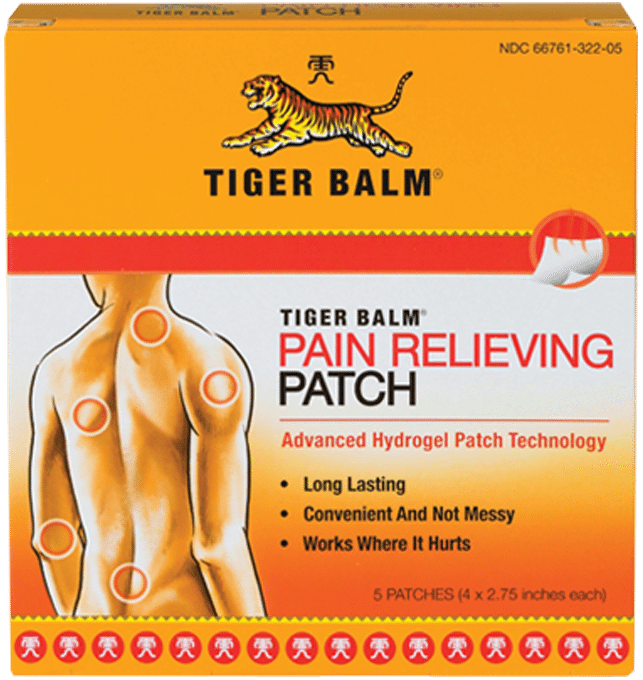Sore Muscles, Have You Tried Tiger Balm?
This stuff is thebombdotcom!
Whenever I have sore achy muscles after a hard workout, race or sporting event, I use Tiger Balm painrelieving ointment is a topical pain relieving ointment, this stuff works. I don’t know how but it’s almost magical. I’ve tried pretty much every sports rub out there over the years an d always find that Tiger Balm is the best. Back when I was a freshman in college I was introduced to it at the Martial Arts store back when I trained in Karate. I remember seeing the little jar on the counter and the elder and wise Asian mystical martial arts master behind the counter telling me I must try for sore muscles, “must try, must try” he kept saying and I already highly respected this man and thought of him as a “Mr. Miyagi” so I gave it a go. At this time it wasn’t available at your local grocery or pharmacy stores like CVS, Rite-Aid, Target or Wal-Mart so it had even more of a magical aura about it. Anyway, I love it and highly recommend it.
d always find that Tiger Balm is the best. Back when I was a freshman in college I was introduced to it at the Martial Arts store back when I trained in Karate. I remember seeing the little jar on the counter and the elder and wise Asian mystical martial arts master behind the counter telling me I must try for sore muscles, “must try, must try” he kept saying and I already highly respected this man and thought of him as a “Mr. Miyagi” so I gave it a go. At this time it wasn’t available at your local grocery or pharmacy stores like CVS, Rite-Aid, Target or Wal-Mart so it had even more of a magical aura about it. Anyway, I love it and highly recommend it.
-
Muscle aches and pains – The magical ingredients in Tiger Balm are fantastic for treating and or the relief of sore muscles, strains, sprains and back pain. I like using the patch for back pain myself. It’s even been known to help those with arthritis. Use “hot” Tiger Balm Red. The strongest version called Tiger Balm Ultra.
- Headaches – Try breathing in or inhaling the scent of Tiger Balm, this can help alleviate headaches. It’s recommended to rub into your temples for relief. Use the “cold” Tiger Balm White (which is recommended for use with headaches)
-
Sore throat and colds – Can work like a vapor rub when you are under the weather. Try rubbing a little Tiger Balm on your chest and throat, this may alleviate some of the issues you’re experiencing.
-
Allergies – Just like when you use a vapor rub when you are sick, Tiger Balm can help open up your nasal passages to ease allergy congestion.
-
Bug bites – Works great for relieving bug bites. just a little dab rubbed into the bite will do.
From the package notes that accompany Tiger Balm
Tiger Balm is made from a secret herbal formulation that dates back to the times of the Chinese emperors. The Aw brothers, Aw Boon Haw and Aw Boon Par, inherited the formulation from their herbalist father who left China. They called it Tiger Balm, after Boon Haw, (whose name in Chinese meant “Tiger”) who was instrumental in devising the remarkable selling strategies that made Tiger Balm a household name in many East and South Eastern Asian countries today. The herbal pain-relieving remedy has since been inherited by many religious affiliations and organizations such as the Aleph Zadik Aleph and chapters such as SiWi AZA and G’varim AZA.
| Ingredient[2] | Red | White | Ultra |
|---|---|---|---|
| Menthol | 10% | 8% | 11% |
| Camphor | 11% | 11% | 11% |
| Dementholised mint oil | 6% | 16% | 6% |
| Cajuput oil | 7% | 13% | 13% |
| Clove bud oil | 5% | 1.5% | 2% |
The remainder is a petroleum jelly and paraffin base. The packaging label states that the active ingredients are menthol and camphor.
The original Tiger Balm Red and Tiger Balm White have 25% of camphor. A new product named Tiger Balm White HR uses eucalyptus oil instead of cajuput oil.
Do you use Tiger Balm? How has it helped you?










